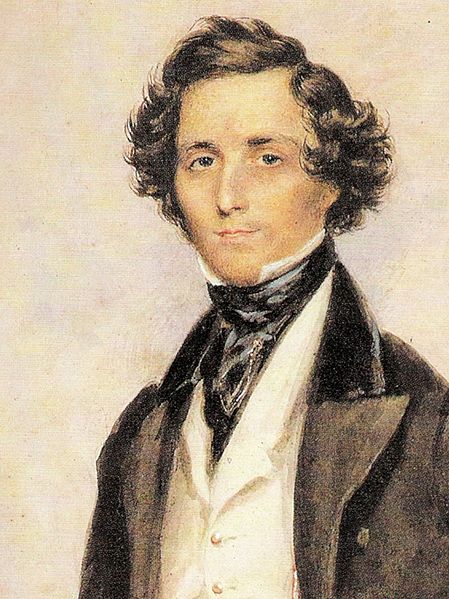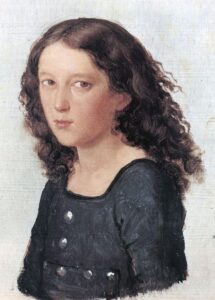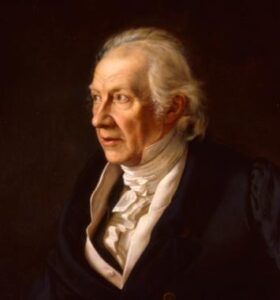
Felix Mendelssohn-Bartholdy
Felix Mendelssohn shared with Mozart the distinctions of being a true child prodigy, growing up under the influence of some of the best musical minds, and dying at an early age after composing a significant body of mature works. Although Mendelssohn worked in the Romantic era, he was essentially a Classicist who drew his inspiration from composers like Mozart and Haydn and from earlier works of Bach and Handel.
In keeping with the Romantic era, however, Mendelssohn often built his compositions on literary and extra-musical themes. His incidental music to Shakespear’s A Midsummer Night’s Dream ranks as one of his most popular works and includes the famous Wedding March that became the standard choice for the wedding recessional. His symphonies also have extra-musical allusions and bear titles such as “Italian,” “Scottish,” and “Reformation.”
Mendelssohn also made his mark as a conductor, raising the performance level and professionalism of the orchestra and developing a vocabulary of gestures to guide the orchestra and interpret the music.
Personal Data
Dates: 1809-1847
Born: Hamburg
Residences: Berlin, Leipzig

Mendelssohn Timeline

Unlike many composers, Mendelssohn grew up in privileged circumstances. His grandfather, Moses Mendelssohn (1729-1786), had been a well-known Enlightenment philosopher with a strong influence on education and religious tolerance. His son Abraham (Felix’s father), a banker, married Lea Salomon, daughter of one of the wealthiest families in Berlin. Music played an important part in the Mendelssohn’s family life. Of the four children born to Abraham and Lea, Felix and his older sister Fanny would become highly accomplished musicians.[/caption]
In 1816, Abraham had Felix and his other children baptized into the Christian faith. Abraham converted to Christianity shortly thereafter and the family added the name Bartholdy, and so one often sees Mendelssohn identified as Felix Mendelssohn-Bartholdy. The conversion was apparently genuine and not simply a matter of social convenience. Later in life, Mendelssohn would compose an oratorio St. Paul inspired by the saint that he saw as an allegory to his own family history.

Mendelssohn began studying music theory and composition with Carl Zelter at the age of nine. Zelter ran the prominent Berlin Singakadamie and was also a friend of Johann von Goethe. Goethe was the most prominent cultural figure in Germany, a status attained through his novella The Sorrows of Young Werther and the play Faust. When Mendelssohn was 12 years old, Zelter took the boy to meet Goethe (then age 73) in Weimar and, although Goethe was sought out by many aspiring artists, a genuine friendship developed between Goethe and Mendelssohn.
Zelter would continue to play an important role in Mendelssohn’s musical development. Zelter had studied the music of J. S. Bach (1685-1750) at a time when Bach had been largely forgotten. Mendelssohn determined to reignite interest in Bach through a performance of Bach’s monumental St. Matthew Passion. With Zelter’s help, Mendelssohn conducted the performance in 1829 at the Singakademie, the first performance of the work since Bach’s death 70 years earlier. That performance is credited with sparking a Bach revival.

Moritz Daniel Oppenheim, Lessing and Lavater as guest in the home of Moses Mendelssohn (1856)
Friday Performance Picks: Works by Mendelssohn
No. 2: Piano Trio No. 1
No 65: Songs Without Words, Op. 67, No. 2
No. 336: A Midsummer Night’s Dream
No. 380: Prelude and Fugue in C Minor
Rondo Capriciosso, Op. 14 (1827)
Mendelssohn composed this work in 1827 when he was 18 years old. The piano was his primary instrument, although he was also an excellent organist and violinist.
(You must be logged into the Circle of Scholars to view the rest of this page.)
